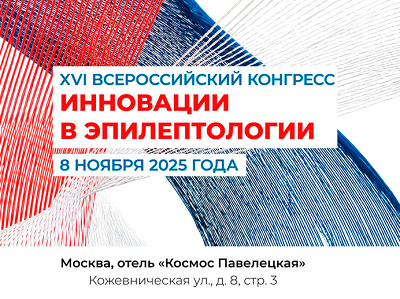Clinical and epidemiological data on epilepsy in the Republic of Bashkortostan
https://doi.org/10.17749/2077-8333.2019.11.3.263-269
Abstract
Objective – to conduct a retrospective study on the prevalence of epilepsy and the use of antiepileptic drugs (AED) in the adult population of the Republic of Bashkortostan (RB) in 2013-2017.
Materials and methods. The study was carried out by analyzing the data of annual reports by the neurology services of outpatient and inpatient medical institutions in cities and regions of the Republic of Bashkortostan. In addition, we used the results of clinical examinations of patients with confirmed epilepsy and the data from the Medical Information and Analytical Center (MIAC).
Results. The prevalence of epilepsy in the RB in 2013-2017 was 291.7-325.8 cases per 100 000 population; the incidence of epilepsy was higher in the central and eastern regions of the Republic. The average age of these patients ranged from 30.5±1.3 years to 41.8±0.2 years. The men/ women ratio was 1.1/1.0. The incidence rate of symptomatic epilepsy ranged from 82.6% to 46.5%. Of AED, carbamazepine was used most often (47.4% of patients) followed by valproic acid (up to 32.9%). AED of the new generation (perampanel) were rarely used (2.4%).
Discussion. According to the data for 2016, the prevalence of epilepsy (per 100 000 population) in the RB exceeded the average figure for Russia as a whole: 323.4 in the Republic of Bashkortostan and 255.4 in the Russian Federation. Patients of young age (up to 40 years old) prevailed; among those, men took some lead. According to the literature, the gender difference in the prevalence of epilepsy remains minimal. As for the etiology, symptomatic epilepsy was the predominant form, with an increased presence of cryptogenic and idiopathic epilepsy in 2016-17. The “basic” AED were largely used for the treatment. Conclusion. Studying the clinical and epidemiological characteristics of epilepsy is important for the systemic organization of specialized medical care and the improvement of life quality in patients with epilepsy.
About the Authors
L. B. NovikovaRussian Federation
MD, PhD, Professor, Head of the Department of Neurology, IDPO,
3 Lenina str., Ufa 50008
A. P. Akopian
Russian Federation
MD, PhD, Associate Professor at the Department of Neurology, IDPO,
3 Lenina str., Ufa 50008
K. M. Sharapova
Russian Federation
MD, PhD Student, Department of Neurology, IDPO,
3 Lenina str., Ufa 50008
References
1. Karlov V.A. Epilepsy in children and adults, women and men: a guide for physicians. Moscow. 2010; 720 s. (in Russ.).
2. Zenkov L.R. Epilepsy: diagnosis and treatment. A guide for doctors. Moscow. 2012. (in Russ.).
3. Atlas: Epilepsy Care in the Wold. Wold Health Organization. 2005; P. 20-27.
4. Robert S. Fisher R.S., Acevedo C., Arzimanoglou A. et all. ILAE Official Report: A practical clinical definition of epilepsy. Epilepsia. 2014; 55 (4): 475-482. DOI: https://doi.org/10.1111/epi.12550.
5. Avakyan G.N., Blinov D.V., Lebedeva A.V., Burd S. G., Avakyan G. G. Classification of epilepsy of the international anti-epileptic league: revision and update of 2017. Epilepsia i paroksizmalʹnye sostoania / Epilepsy and Paroxysmal Conditions (in Russ.). 2017; 9 (1): 6-25. DOI: 10.17749/2077-8333.2017.9.1.006-025.
6. WHO. Global burden of epilepsy and the need for coordinated action at the country level to address its health, social and public knowledge implications. 2 Febrary 2015.
7. Avakyan G.N. Epidemiology of epilepsy and optimization of drug therapy of focal epilepsy. Epilepsia i paroksizmalʹnye sostoania / Epilepsy and Paroxysmal Conditions (in Russ.). 2014; 6 (1): 3-5.
8. Gusev E.I., Gekht A.B. Modern epileptology: problems and solutions. Moscow. 2015; 520 s. (in Russ.).
9. The overall incidence of the adult population of Russia in 2016. Statistical materials (Part IV) [Electronic resource] URL: https://www.rosminzdrav.ru/ministry/61/22/stranitsa-979/statisticheskie-i-informatsionnye-materialy/statisticheskiy-sbornik-2016-god. Accessed: 09.01.2019.
10. Ministry of Health of the Republic of Bashkortostan. Official site. [Electronic resource] URL: http://miats-rb.rf/activities/sborniki.php. Accessed: 09.01.2019.
11. Gulyaev S.A., Arkhipenko I.V., Ovchinnikova A.A. Modern aspects of epidemiology of epilepsy. Russian Journal of Pediatric Neurology (in Russ.). 2011; VI (1): 11-18.
12. Avakyan G.N. Modern epileptology. Problems and solutions. Epilepsia i paroksizmalʹnye sostoania / Epilepsy and Paroxysmal Conditions (in Russ.). 2014; 6 (4): 46-49.
13. Kotov A.S., Rudenko A.M. Cryptogenic and symptomatic temporal epilepsy in adults. Annals of Clinical and Experimental Neurology (in Russ.). 2009; 3 (2): 9-13.
14. Novikova L.B., Akopyan A.P., Sharapova K.M. Analysis of the prevalence and incidence of epilepsy in the Republic of Bashkortostan. Bulletin of the Bashkir State Medical University (in Russ.). 2016; 4: 951-955.
15. Bazilevich S.N. Cryptogenic epilepsy in adults “Hidden problems of structural well-being”. Journal of Neurology and Psychiatry. SS Korsakov (in Russ.). 2013; 113 (4-2): 10-19.
16. Kotov A.S., Belova Yu.A. The effectiveness of the treatment of epilepsy with different antiepileptic drugs. Journal of Neurology and Psychiatry. SS Korsakov (in Russ.). 2012; 112 (9): 37-40.
17. Avakyan G.N., Burd S. G. A modern view on the use of a prolonged form of carbamazepine in epilepsy. Epilepsia i paroksizmalʹnye sostoania / Epilepsy and Paroxysmal Conditions (in Russ.). 2012; 4 (2): 67-71.
18. Avakyan G.N., Avakyan G. G. Transformations of the epileptic system. The state of the question and the possibility of solving the problem. Epilepsia i paroksizmalʹnye sostoania / Epilepsy and Paroxysmal Conditions (in Russ.). 2017; 9 (2): 6-19. DOI: 10.17749/2077- 8333.2017.9.2.006-01913.
19. Mukhin K.Yu., Pylaeva O.A., Glukhova L.Yu., Mironov M.B., Bobylova M.Yu. The basic principles of the treatment of epilepsy. The algorithm of choice of antiepileptic drugs. Russian Journal of Pediatric Neurology (in Russ.). 2014; 4: 30-49.
20. Brodie M. J. Pharmacological Treatment of Drug-Resistant Epilepsy in Adults: a Practical Guide. Curr Neurol Neurosci Rep. 2016 Sep; 16 (9): 82. DOI: 10.1007/ s11910-016-0678-x.
Review
For citations:
Novikova L.B., Akopian A.P., Sharapova K.M. Clinical and epidemiological data on epilepsy in the Republic of Bashkortostan. Epilepsy and paroxysmal conditions. 2019;11(3):263-269. (In Russ.) https://doi.org/10.17749/2077-8333.2019.11.3.263-269

This work is licensed under a Creative Commons Attribution-NonCommercial-ShareAlike 4.0 International License.











































